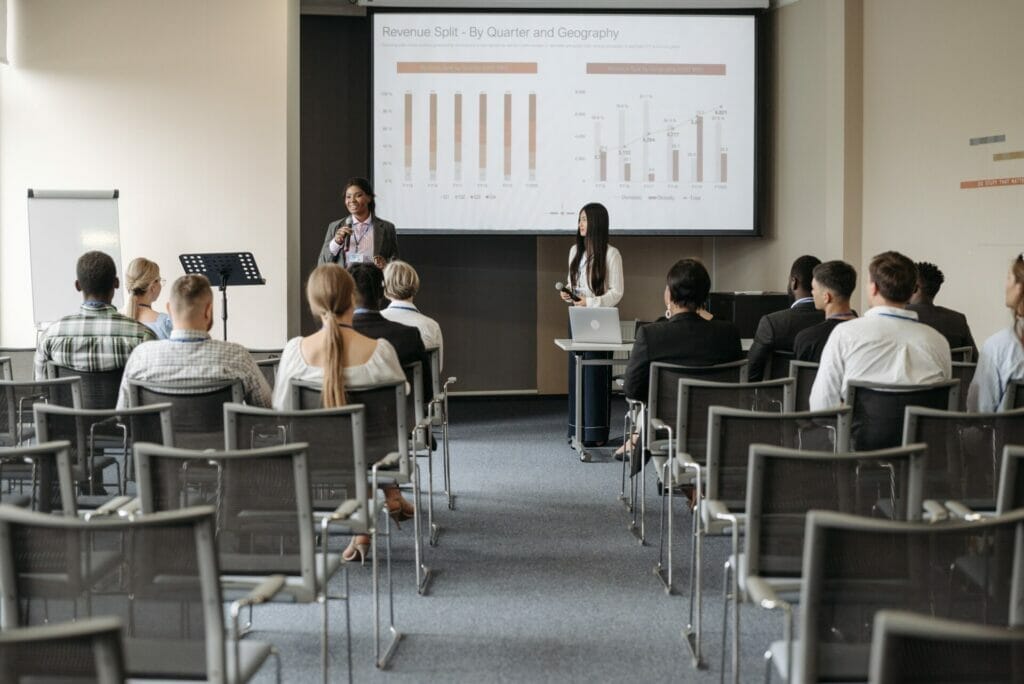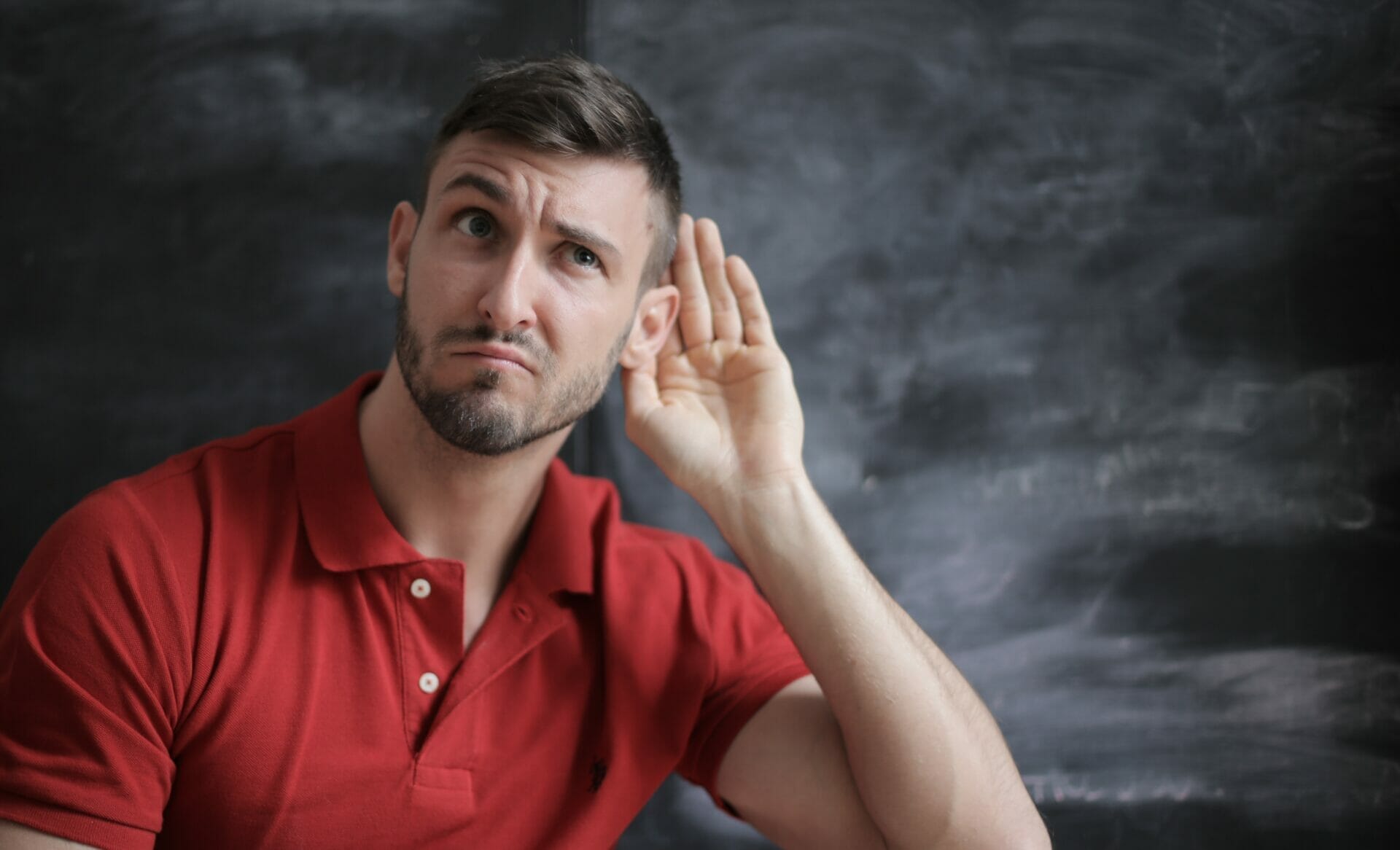Introduction
In a world full of voices and distractions, true communication can feel like a distant art. Although everyone listens, how many of us participate in listening? What is challenging about active listening is that it involves more than just hearing what is being said. It additionally means engaging with people, comprehending their views, and growing bridges of empathy and acceptance as true.
Picture this: You’re in a verbal exchange with a near pal, a colleague, or a family member. You realize that your mind has wandered. It’s due to the tasks awaiting you at work, the buzzing notifications on your phone, and even your internal thoughts and judgments. This scenario is all too familiar. It underscores the challenges we face in being present and attentive when we listen.
Active listening, while rewarding, isn’t without its obstacles. These challenges can arise both within ourselves and from the external world. But fear not. By recognizing these barriers, we open the door to a world of improved relationships. We also discover deeper understanding and enrich personal and professional growth.
In this exploration of the art of active listening, we will navigate the challenges. We will emerge equipped with the tools to overcome them. We’ll explore the psychological barriers that cause us to get distracted. We’ll also look at the nuances of nonverbal communication. And we’ll consider the significance of finding the proper amount of speech and quiet.
Let’s start this adventure. It will redefine how we interact with the world and how we listen. It’s time to master the art of active listening, one challenge at a time.
Key Takeaways
- Awareness is the First Step: Recognize that active listening is a conscious effort. Being aware of the challenges is the initial step toward improvement.
- Internal Barriers Can Be Overcome: Mental distractions, prejudices, ego, and self-centeredness can all be controlled. Practice mindfulness, self-recognition, and empathy to break down these boundaries.
- External Distractions Require Control: Noise, multitasking, and virtual distractions are external foes. Learn to create conducive listening surroundings and withstand the enticement of your cell phone during conversations.
- Empathy is a Superpower: The potential to put yourself in someone else’s shoes is a sport-changer in energetic listening. It dismantles biases and fosters profound connections.
- Nonverbal Language Speaks Volumes: Body language and tone of voice are essential in understanding unspoken words. Sharpen your nonverbal listening skills.
- Balance Speaking and Listening: Know when to offer advice and when to listen. Striking the right balance is an art that improves relationships.
- Active Listening Transcends Cultures: Recognize that cultural backgrounds can impact how we listen. Embrace cross-cultural active listening for inclusive communication.
- Professional and Personal Benefits: From career growth to stronger personal relationships, the benefits of active listening are far-reaching. Realize its potential in all aspects of life.
- Feedback Fuels Improvement: Constructive feedback is a catalyst for growth. Learn to present and acquire feedback for more suitable conversation.
- The Future of Listening: Be prepared for the ever-evolving landscape of listening. Technology will play a sizable function, however active listening’s price will remain undying.
- Practice Makes Perfect: Active listening is a talent that improves with exercise. Start these days, and also you’ll turn out to be an additional attentive, empathetic, and effective communicator.

The Definition of Active Listening
So, what is active listening?
Active listening is not just hearing words but fully engaging with the speaker. It involves giving your undivided attention, processing the information, and responding thoughtfully. Passive listening is merely hearing words without a real connection. In contrast, active listening involves absorbing and understanding the message.
The Difference between Active and Passive Listening
Imagine a chum pouring their heart out to you about their day. In passive listening, you might nod and make an occasional “uh-huh” sound. But your mind may be wandering elsewhere. In contrast, active listening entails leaning in. It involves making eye contact and responding with empathy. You ask questions, seek clarification, and convey that you’re truly present.
The Significance of Active Listening
Active listening is not just a polite gesture. It is the cornerstone of strong relationships. When you actively listen, you show respect, empathy, and a real choice to understand others. This fosters acceptance as true, empathy, and mutual appreciation—essential substances for any meaningful connection.
The Benefits of Active Listening Skills
The Power of Building Stronger Relationships
Active listening is the call of the sport for setting up and nurturing significant relationships. The link between you and that character is reinforced when you consciously try to understand them. Friends, family, and coworkers will appreciate your desire to invest in the relationship. This appreciation can only result in closer bonds.
Confidence and problem-solving
When you’re an active listener, you create a safe space for open dialogue. Trust flourishes in such an environment. People are more likely to confide in you, understanding that their phrases gained’t fall on deaf ears. Moreover, active listening encourages problem-solving. To better address issues, conflicts, or challenges, first understand them from the speaker’s perspective.
Personal and Professional Growth
The benefits of active listening extend beyond personal relationships. In the professional realm, active listeners make great leaders and team members. They understand instructions clearly, resolve conflicts, and are more approachable. In conferences, their entry is valued as it’s well-knowledgeable and considerate. This now not only blesses the man or woman but also the agency as a whole.
The Physical Barriers to Effective Listening
Internal Challenges
Mental Distractions
Active listening begins within. Often, we find our minds wandering during a conversation. Internal thoughts and distractions can be powerful hindrances. To combat this, consider these tips:
- Practice Mindfulness: Focus your thoughts on the present second. When you sense your mind drifting, lightly carry it back to the speaker.
- Eliminate External Distractions: Find a quiet, comfortable space for conversations, so your attention is less likely to waver.
Prejudices and Biases
Our preconceived notions and biases can cast a shadow over our capacity to concentrate actively. It’s crucial to understand and deal with them. Here’s how:
- Self-Reflection: Regularly reflect on your ideals and biases. Acknowledging them is step one in mitigating their impact.
- Empathetic Listening: Make a conscious try to apprehend the speaker’s mindset, although it differs from yours.
Ego and Self-Centeredness
Ego and self-centeredness can obstruct the path to active listening. To overcome this, try the following techniques:
- Humility: Remind yourself that every interaction is a chance to improve and learn. No one knows every solution.
- Ask Open-Ended Questions: Encourage the speaker to be sensitive to their emotions and thoughts. Distractions and Multitasking
Distractions and Multitasking
In the modern global, distractions are considerable. From buzzing smartphones to noisy environments, they could derail our listening efforts. Here’s how it affects active listening: Here’s the way it impacts energetic listening:
- Divided Attention: Multitasking divides your awareness and interest. To actively pay attention, supply the speaker with your undivided attention.
- Real-Life Examples: Consider this scenario: You’re in a meeting, and your co-worker is speaking. But you’re also checking emails. The result? You leave out vital details, and the speaker feels undervalued.
Miscommunication and Misinterpretation
Miscommunication can cause misunderstandings and strained relationships. Language boundaries and non-verbal cues contribute to this trouble.
- Clarify Doubts: If you’re unsure approximately the speaker’s message, don’t hesitate to invite for an explanation. It’s better to make certain you’ve understood successfully.
- Observe Nonverbal Cues: Sometimes, the absence of an announcement holds simply as a whole lot significance as its inclusion. To get the whole that means, paying attention to the speaker’s tone of voice, frame language, and facial expressions.
Response Preparation
Often, we’re so focused on crafting our responses that we omit the essence of what’s being stated. To fully engage with the speaker:
- Hold Off on Judgment: Train yourself to avoid forming judgments or responses prematurely. Let the speaker finish before offering your insights.
- Active Pause: Use small pauses to reflect on what’s been said and ensure you’re not just waiting for your turn to speak.
Emotional Barriers
Emotions like fear, anger, or defensiveness can act as formidable barriers to active listening. Here’s a way to manipulate them:
- Self-Awareness: Recognize your emotional triggers and be aware of how they have an impact on your listening. This awareness lets you reply extra thoughtfully.
- Breathing Exercises: When feelings run immoderate, take a deep breath. It can help calm your mind and enable more productive listening.
Table: Different Types of Ineffective Listening
| Type | Description |
|---|---|
| Selective Listening | Listening only to what supports existing beliefs or interests. |
| Interruptive Listening | Interjecting or speaking over the speaker without allowing them to finish. |
| Pseudo Listening | Giving the appearance of listening but not paying attention or comprehending. |
| Defensive Listening | Taking comments as personal attacks and becoming defensive instead of actively listening. |

Overcoming Challenges in Ineffective Listening
Becoming an active listener is an ongoing process. Here are some practical pointers that will help you conquer the internal and external boundaries:
- Mindfulness: Cultivate mindfulness through meditation and respiration through sporting activities. It can help you stay present during conversations.
- Practice Empathy: Empathetic listening may be an effective tool. Try to step into the speaker’s footwear and apprehend their point of view.
- Continuous Self-Reflection: Regularly look at your listening capabilities and paintings to improve them.
- Open Communication: Encourage open and sincere communique with those you interact with. This can reduce misunderstandings.
- Feedback: Ask for remarks from buddies, family, or colleagues to understand your progress as an active listener.
The artwork of active listening is a talent worth studying. It can beautify relationships, and foster better information, and pressure personal increase. By spotting and surmounting those demanding situations, you can become a remarkable, energetic listener who honestly connects with others. So, allow include these techniques and start our adventure closer to progressed lively listening.
The Role of Noise in Active Listening
The Impact of External Noise
Noise, both outside and inside, can considerably affect our capacity to listen effectively. External noise, which includes the creation of a loud song, can create distractions and make it tough to pay attention to the speaker. It can disrupt the flow of communication and make it tough to select vital details or nuances within the speaker’s message.
Consider seeking interaction in a meaningful discussion with a coworker in a busy coffee shop. It would be challenging to concentrate and communicate because of the continual background noise.
Taming Internal Noise for Effective Listening
Internal noise, however, refers to the psychological distractions that prevent energetic listening. This can encompass wandering thoughts, preconceived ideas, or even personal biases. When our minds are cluttered with internal noise, it will become difficult to engage with the speaker and apprehend their message.
Imagine paying attention to a patron’s worries even as concurrently considering your subsequent assembly or non-public worries. The internal noise can prevent you from empathizing with and connecting with the speaker.
Deciphering Semantic Noise
Another kind of noise that could affect energetic listening is semantic noise. Semantic noise occurs when the receiver is confused approximately the meaning of a word or word used by the speaker. It may be due to language differences, jargon, or complex terminology.
For example, if a speaker uses technical phrases that can be strange to the listener, it may create confusion and hinder comprehension. Semantic noise can also arise when there are multiple interpretations or ambiguous statements, leading to misunderstandings.
| Types of Noise | Description | Impact on Active Listening |
|---|---|---|
| External Noise | Physical distractions such as loud music or construction noise | Creates distractions and makes it difficult to concentrate on the speaker |
| Internal Noise | Psychological distractions like wandering thoughts or biases | Hinders engagement and understanding of the speaker’s message |
| Semantic Noise | Confusion over the meaning of words or phrases used by the speaker | Leads to misunderstandings and hampers comprehension |
It might be difficult to combat the effect of noise on active listening. However, certain tactics can be useful. We may improve our hearing abilities by being aware of the many noise sources. We can actively try to reduce their impact. This includes creating an environment conducive to listening. For example, finding a quiet space or using noise-canceling headphones.
It also involves practicing mindfulness. Focus on the speaker without allowing internal distractions to interfere. Additionally, asking clarifying questions and seeking feedback can help clarify any semantic noise. It can also ensure better understanding. We can become more effective listeners by actively addressing and minimizing noise. This also fosters better communication.
Non-Verbal Challenges
Interpreting Body Language and Tone of Voice
Understanding non-verbal cues is a potential that transcends language limitations. It’s essential for effective verbal exchange. It’s an art that involves perceiving emotions, intentions, and thoughts. This is done without relying on spoken words.
In this section, we will delve into interpreting body language. We will also cover interpreting the tone of voice. We will show how mastering these skills leads to clearer communication. It also improves relationships.
A rich tapestry of motions, attitudes on the face, and postures make up body language. It is quiet yet potent. It communicates attitudes, emotions, or even subconscious thoughts. When we talk about decoding body language, we talk about the capability to efficiently decode those non-verbal signs.
The Power of Non-Verbal Cues
Research suggests that non-verbal cues frequently convey more weight in communique than the words we communicate. It’s said that as much as ninety-three percent of our communication is non-verbal, making it a crucial element of knowledge for others. In a world where face-to-face verbal exchange is increasingly being replaced with the resource of digital interaction, honing these skills is essential.
Effective interpretation of body language can enhance your personal and professional life. It enables you to:
- Resolve Conflicts: Misunderstandings often upward push up from misinterpretations of non-verbal cues. Learning to study one’s cues can prevent conflicts and foster harmonious relationships.
- Build Trust: Trust is the foundation of any relationship, be it in the company or private life. Accurate interpretation of frame language helps establish trust and credibility.
- Enhance Empathy: When you can look at a person’s frame language, you may highly recognize their feelings and empathize with their angle.
- Improve Negotiation Skills: In negotiations, being able to discern the opportunity celebration’s non-verbal cues can offer insights into their role, assisting you in making more knowledgeable choices. Key Non-Verbal Cues
Key Non-Verbal Cues
To excel in deciphering body language, one ought to become acquainted with several non-verbal cues. Here are a few critical ones:
- Facial Expressions: The face is a treasure trove of statistics. A smile, furrowed brows, or a raised eyebrow can display plenty of information about a person’s emotional state.
- Gestures: Hand moves, palms crossing, or pointing can indicate whether someone is open, protective, or assertive.
- Posture: How someone stands or sits can cause self-perception, tension, or indifference.
- Eye Contact: The eyes are frequently called the “domestic windows to the soul.” They show feelings and intentions. Steady eye contact can characterize self-assurance and honesty, even as averting eye contact may suggest pain or dishonesty.
Avoiding Miscommunication Due to Non-Verbal Cues
It takes place more frequently than one can believe, while nonverbal cues are misinterpreted and result in misunderstandings. These misconceptions might also bring about arguments, stress, and relational damage. To avoid such pitfalls, here are a few strategies to remember:
1. Be Mindful
Practice mindfulness in your interactions. Pay close to hobby to the non-verbal cues of the individual you’re talking with. This calls for being present in the second and actively staring at their frame language.
2. Ask Clarifying Questions
If you study a miscommunication because of non-verbal cues, don’t hesitate to ask clarifying questions. For example, you will likely say, “I noticed you seem uncomfortable. Is there some aspect you’d want to percent or communicate?” Is there something you’d like to share or discuss?”
3. Seek Feedback
Feedback is priceless. Encourage open and sincere verbal exchange by using inquiring for remarks for your non-verbal cues. This can create a safe space for open dialogue.
Activities to Enhance Your Nonverbal Listening Skills
You may do several activities to improve your capacity for good nonverbal cue interpretation. These activities are intended to hone your observational abilities and support stronger interpersonal connections.
1. Observation Challenge
Find a quiet place to sit and observe people in public. Pay attention to their gestures, facial expressions, and posture. Try to discern their emotions and intentions. Take notes on what you observe and compare your notes with your interpretations.
2. Role-Playing
Engage in role-playing scenarios with a partner. One person communicates non-verbally, while the other practices interpreting these cues. This hands-on exercise can provide valuable insights into the complexities of non-verbal communication.

Empathy and Active Listening
Empathy is a cornerstone of a powerful communique. It consists of information and sharing the feelings of some other individual. When combined with energetic listening, it can bridge gaps, resolve conflicts, and assemble robust connections.
Highlight the Role of Empathy in Active Listening
Empathy performs a pivotal position in lively listening. When you actively concentrate on a person, you now not only pay attention to their terms but also realize their emotions and factors of view. This improved diploma of involvement promotes consideration and mutual information.
Explain How Empathetic Listening Can Help Address Challenges
Empathy is a powerful device for overcoming commonplace communication challenges, which include biases and self-centeredness. By actively listening with empathy, you can:
- Reduce Biases: Empathetic listening allows you to peer topics from the speaker’s element of view, minimizing preconceived biases.
- Combat Self-Centeredness: It shifts the point of interest out of your thoughts and concerns to the speaker’s, selling a greater balanced and considerate change.
Strategies for Effective Active Listening
Active listening is the exercise of being virtually attractive to the speaker, demonstrating that you’re attentive and surely interested in what they have got to mention. Here are a few techniques to grasp this art:
Introduction to Mindfulness Practices in Active Listening
- Mindful Breathing: Before moving into a conversation, take a 2nd to recognize your breath. Deep, conscious breaths will let you live gift and be attentive.
- Take Away All Diversions: Reduce as tons as feasible the quantity of extraneous distractions so you can hold your awareness at the speaker. Close any open tabs on your pc, turn off your smartphone, and discover a quiet vicinity to sit down.
Increasing Your Ability to Communicate Both Verbally and Nonverbally
- Open-Ended Questions: Use open-ended inquiries to nudge the speaker into additional sharing. This displays your hobby and creates space for a deeper discourse.
- Non-Verbal Cues: By nodding, keeping eye contact, and projecting your own emotions onto the speaker, you can demonstrate that you are paying attention.
Some Tips for Improving Responses and Rewording
- Reflective Responses: After the speaker has completed, reflect on what they’ve stated. This not only demonstrates your listening skills but also ensures you understand correctly.
- Paraphrasing: Summarize the speaker’s main points in your own words. This confirms your comprehension and shows that you value their perspective.
How Patience Is a Key Component of Active Listening
Patience is essential in active listening. Rushing or interrupting the speaker can hinder effective communication. Practice patience by:
- Allowing pauses for the speaker to collect their thoughts.
- Avoiding the urge to formulate your response while the other person is still speaking.
Techniques to Cultivate Patience During Conversations
Patience can be cultivated through mindfulness and self-cognizance. Recognize your impatience triggers and work on coping with them. Remember, active listening is set for the speaker, not your immediate response.
Mastering the art of deciphering non-verbal cues is a key part of a powerful communique. Practicing empathy and actively listening are also key additives. By honing these skills, you can build stronger relationships. You can handle conflicts and navigate human interaction with finesse.
Table: Strategies to Improve Active Listening Skills
| Technique | Description |
|---|---|
| Mirroring | Reflecting the speaker’s body language, gestures, and verbal cues |
| Guessing Game | Engaging in a fun and interactive exercise where you listen closely and guess what the speaker is describing |
| Storytelling | Listening attentively to a personal story or experience and summarizing the key points to demonstrate understanding |
Active Listening in Professional and Personal Settings
Challenges in Workplace Communication
Effective workplace verbal exchange is crucial for productivity and collaboration. However, miscommunication, misconceptions, and insufficient statistics transmission frequently bring about troubles. The presence or absence of energetic listening could make a difference.
Employees may be distracted, multitasking, or genuinely not paying full interest all through conferences, negotiations, or interviews. This consequences in lost possibilities, unresolved issues, and hampered boom. To conquer these demanding situations, getting to know the artwork of lively listening is paramount.
Techniques for Active Listening in Meetings, Negotiations, and Interviews
Active listening techniques are a valuable asset in professional interactions. It involves not only hearing but also comprehending, interpreting, and responding effectively. Some key techniques include:
1. Maintaining Eye Contact
Maintaining constant eye touch shows that you are engaged in the communication. It conveys recognized and undivided interest, fostering agreement and openness.
2. Avoiding Interruptions
Interrupting others can hinder effective communication. Allowing the speaker to express their thoughts without interruption is a sign of respect and enables a complete exchange of ideas.
3. Asking Clarifying Questions
Seeking clarification whilst something is doubtful no longer demonstrates your interest however additionally ensures that both parties are on the same web page.
4. Reflective Listening
Repeating what you’ve heard in your phrases demonstrates your know-how and gives the speaker an possibility to accurate any misconceptions.
Career Benefits of Being a Proficient Active Listener
Proficiency in active listening can significantly impact one’s career trajectory in the workplace. It promotes better problem-solving. It encourages more efficient cooperation. It also fosters a better understanding of clients’ and coworkers’ needs.
Additionally, active listeners typically possess higher leadership abilities. They are more sensitive to the requirements and worries of their team members. These attributes often lead to career growth and recognition.
Challenges in Romantic Relationships, Friendships, and Family Dynamics
Active listening isn’t restrained to the administrative center; it extends to private relationships. The demanding situations confronted in these scenarios are frequently special but equally substantial. Misunderstandings and miscommunications can strain romantic relationships, friendships, and circle of relatives dynamics. People may not feel heard, leading to emotional disconnection.
Building Stronger Connections Through Active Listening
Active listening performs a pivotal role in constructing more potent, extra-significant connections. It nurtures consideration, empathy, and knowledge. Here are some techniques that can help in personal relationships:
1. Empathetic Listening
Understanding the emotions behind the words is vital. Being empathetic allows you to attach on a deeper stage and provide the emotional help wished.
2. Being Present in the Moment
In personal relationships, it’s essential to be completely gifted, leaving aside distractions and gadgets to reveal to your family that they may be your precedence.
3. Offering Support and Validation
Validating the feelings and experiences of others, even if you don’t agree, can strengthen bonds and show that you respect their perspective.
Case Studies or Personal Anecdotes for Illustration
To illustrate the power of active listening in personal relationships, consider the following case studies:
Sarah and John: Sarah’s active listening transformed her relationship with John. By paying attention to his concerns about their future, she reassured him and found common ground.
Alex and Mia: Mia’s attentive listening helped her friend Alex overcome a challenging time. She offered support and a safe space for him to share his feelings.
The Role of Nonverbal Communication
Nonverbal clues in lively listening are simply as important as verbal communication. Body language, eye contact, and gestures are examples of these indicators. Understanding and mastering nonverbal communication may substantially enhance your listening skills.
The Importance of Body Language
Body language can convey a person’s emotions and thoughts even if they remain unspoken. Understanding these cues permits you to grasp the underlying emotions and worries of the speaker.
The Significance of Eye Contact
Maintaining appropriate eye contact indicates that you are attentive and engaged. Constructive remarks are a skill in itself. It fosters a sense of trust and openness.
The Power of Gestures
Gestures can reinforce your understanding and show that you are actively involved in the conversation.

The Power of Feedback
Providing feedback during a conversation is a powerful tool in active listening. It not only shows your engagement but also allows for a more productive exchange of ideas.
Enhancing Active Listening Through Feedback
When you offer feedback, it demonstrates that you are actively processing the records and considering the speaker’s attitude. It also can assist in clarifying any points of misunderstanding.
The Art of Constructive Feedback
Constructive comments are a talent in itself. It includes providing remarks in a manner that is useful and non-confrontational. Constructive remarks encourage open speech and foster a sense of collaboration.
The Future of Active Listening
Exploring how active listening can evolve
Active listening is not just hearing words. It’s also about understanding, processing, and responding to the message being conveyed. This skill has traditionally been nurtured in personal and professional settings. It pursuits to improve relationships, remedy conflicts, and decorate general conversation. The international is becoming extra interconnected and reliant on generation.
The Digital Revolution
In today’s digital age, communication is often mediated through screens. This has both positive and negative implications for active listening. On one hand, technology provides tools for recording and reviewing discussions. This makes it simpler to reflect on our relationships. However, distractions and multitasking while listening have grown to be more extensive. It may be a double-edged sword.
AI and Virtual Assistants
Artificial intelligence (AI) and digital assistants are converting how we interact with statistics. They are also changing how we interact with each other. These technologies can provide real-time chat transcripts. They can also offer language translation services. They can provide insights into the emotions behind the words. This opens up new possibilities for understanding and practicing active listening.
The Role of Wearable Technology
Wearable technology is changing how we interact with audio content. This includes smart glasses and earphones. These devices can offer individualized audio experiences. They also smoothly integrate into our daily lives. This technology can potentially enhance our ability to focus on conversations. It can also help us practice active listening effectively.
Technology’s role in shaping the future of listening
The development of technology will have a significant impact on active listening in the future. As we move forward, technology will become increasingly important. It will determine the listening landscape.
Audiobooks and Podcasts
Audiobooks and podcasts are becoming more and more popular. They offer a special platform for active listening. People may interact with information to deepen their understanding. It helps them actively participate in conversations on many topics. They can listen to it conveniently while on the go.
VR: virtual reality
Virtual reality is still in its early stages. However, it can transform our conversational experiences. VR creates environments that mimic face-to-face interactions. It opens up a new dimension of active listening. VR additionally permits human beings to attach on a far deeper stage.
Data-Driven Insights
Big statistics and analytics are supporting us in gaining valuable insights into our listening habits. By understanding our patterns and behaviors, we can tailor our active listening techniques for better communication outcomes.
Tips for staying ahead in an ever-changing listening landscape
Growing both personally and professionally requires adjusting to the always-changing active listening environment. Here are some pointers to assist you in keeping up in this competitive industry:
Embrace Technology
Make the most of the technology available to you. Use AI-driven tools for transcribing conversations, and wearables for a focused audio experience.
Practice Mindfulness
Stay present in the moment when listening to others. Minimize distractions and give your full attention to the speaker.
Seek Feedback
Ask for feedback on your active listening skills. Constructive criticism can help you improve and refine your techniques.
Continuous Learning
Engage in continuous getting to know with the aid of exploring books, articles, and podcasts that concentrate on energetic listening and communique.
Frequently Asked Questions: What is challenging about active listening
Question: What are the common limitations to effective listening, and the way can they be overcome?
Answer: Effective listening is a crucial talent in the art of conversation. Common barriers to lively listening consist of mental noise, evaluative listening, and a lack of eye touch.
It’s critical to turn out to be a better listener by actively focusing on the speaker, paying attention to frame language and facial indications, fending off the propensity to make assumptions, and lots more strategies to get beyond those boundaries and improve your listening talents.
To get beyond these barriers and recognize what humans are saying, interpersonal skills like high-quality listening and being open-minded are important.
Question: What are the symptoms of useless listening, and the ways can one improve their listening effectiveness?
Answer: Signs of useless listening can manifest as a loss of eye contact, slouching, or thinking about how to reply as opposed to definitely listening to a speaker. To improve your listening effectiveness, it’s crucial to forestall evaluating what others suppose or sense the need to protect your function.
Overcoming these obstacles involves creating conducive surroundings and maintaining eye contact with the speaker to ensure that your communique competencies continue to be powerful.
Question: How does the language barrier affect powerful communication, and what strategies may be used to conquer it?
Answer: Effective conversation can be extensively hampered by way of the language barrier, specifically while human beings from numerous cultures are concerned. It can create semantic noise, where the meaning of words or phrases is doubtful.
To conquer this barrier, improving your listening talents is essential. Effective conversation may be drastically hampered with the aid of the language barrier, in particular when human beings from various cultures are involved.
Question: How does the language barrier affect powerful communication, and what strategies may be used to overcome it?
Answer: Effective communication may be considerably hampered by the language barrier, in particular, while humans from various cultures are concerned. It can create semantic noise, where the meaning of words or phrases is unclear.
To overcome this barrier, improving your listening skills is essential. Effective conversation may be drastically hampered with the aid of the language barrier, mainly whilst people from several cultures are concerned.
Question: How can one avoid information overload and interruptions to ensure a lack of listening does not hinder effective communication?
Answer: Despite the importance of listening, staying focused in today’s continual interruptions and information overload can be tough. To avoid these issues, stop multitasking and pay attention to what the other person says. Actively practicing active listening can help you comprehend more by preventing you from jumping to conclusions or planning your next move.
To demonstrate that you’re paying attention, maintain eye contact with the speaker and incline your body slightly in their direction. You may continue participating in the chat in this manner even when someone is speaking.
Question: What position does cultural consciousness play in addressing cultural barriers to listening, consisting of tone of voice and tempo of speech?
Answer: Cultural focus plays an important function in addressing cultural boundaries to effective listening. It entails knowledge that human beings from exclusive cultures can also have varying tones of voice and paces of speech. To turn out to be a better listener in a multicultural context, it’s important to be respectful and attentive to those variations.
Paying attention to the speaker’s cultural cues and frame language is key to overcoming those boundaries. Effective listening can help build bridges between cultures and foster stronger interpersonal connections.
Conclusion
In conclusion, the future of active listening is a dynamic and exciting journey. Technology is shaping the manner we interact, and active listening isn’t any exception. As we navigate the virtual revolution, it’s critical to include technology. We should also practice mindfulness. We should continually seek ways to enhance our listening skills.
Active listening is more than just a valuable skill. It’s a bridge to stronger personal and professional relationships. By adapting to the changes in the listening landscape, we can make the most of this powerful tool.
So, let’s encourage one another to practice active listening. Let’s also work on overcoming its challenges. In doing so, we open doors to improved communication, understanding, and connection.
Additional Resources
Here are some excellent sites to improve your active listening abilities. You can also obtain more knowledge about this developing field.
Books, Articles, and Podcasts
- The Art of Active Listening,” by Jane Doe, is a comprehensive guide to mastering active listening.
- “Effective Communication in the Digital Age” is an article. It is about understanding the nuances of listening in a technology-driven world.
- The Active Listener’s Podcast is a podcast series. It is dedicated to exploring the art of active listening.
Tools and Apps
- Otter.ai – A transcription tool that can help you review and reflect on your conversations.
- Rehearsal is an app designed to improve your communication and active listening skills. It does this through virtual scenarios.
- ListenWise is a platform. It offers a curated collection of audio content. This is for active listening practice.
Please share your ideas, experiences, and lessons learned in the comments section. You can also share them on social media. We’re optimistic about this crucial ability’s future. We are keen to create a community of individuals who can listen well. Please only share in English.

Sarah Andrews’ work on relationships is informed by a breadth of experience and a strong interest in human nature. Sarah, who holds a Psychology degree and has a good eye for nuances, delves into the complexity of communication and emotion, delivering insightful insights for readers seeking personal growth and emotional pleasure. Sarah hopes that her empathic approach and insightful suggestions will motivate readers to understand themselves and their relationships better.
